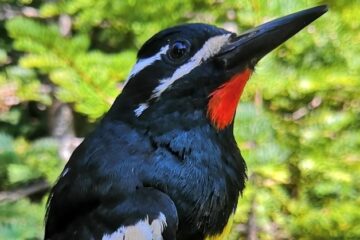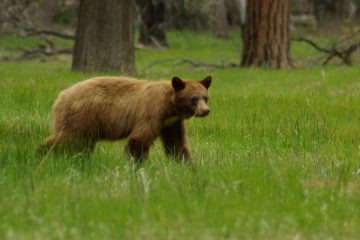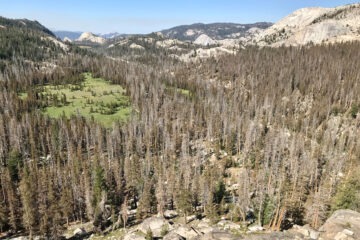“Trail restoration” usually calls to mind shovels, stone steps and switchbacks. Carefully crafted wooden walkways? Not so much. But boardwalks are an important element of Yosemite’s vast trail network. They allow people to cross and experience wetland areas without damaging the habitat underfoot.
Without boardwalks, hikers can inadvertently crush plants, compact soil and disrupt ecosystems — and end up with soggy socks. With boardwalks, water flows freely, saturating soil and quenching thirsty plant roots, and hiking boots stay dry – and safely away from flora and fauna below.
Our donors have helped fund the construction and restoration of boardwalks throughout the park. If you’ve visited Yosemite recently, there’s a good chance you took a stroll on one!
You’ll find donor-supported boardwalks…
… in Yosemite Valley, where they offer incredible views of famous features such as Yosemite Falls, Half Dome and Sentinel Rock, while protecting meadows that support an array of animals, including deer, bears, songbirds, and California red-legged frogs, a threatened amphibian species.
In the Valley’s Cook’s, Sentinel and Stoneman meadows, donor-supported crews have built or rehabilitated several boardwalks, and protected the underlying ecosystems, by taking steps such as removing pavement, repairing deteriorated decking and railings, and relocating sections away from the eroding riverbank.
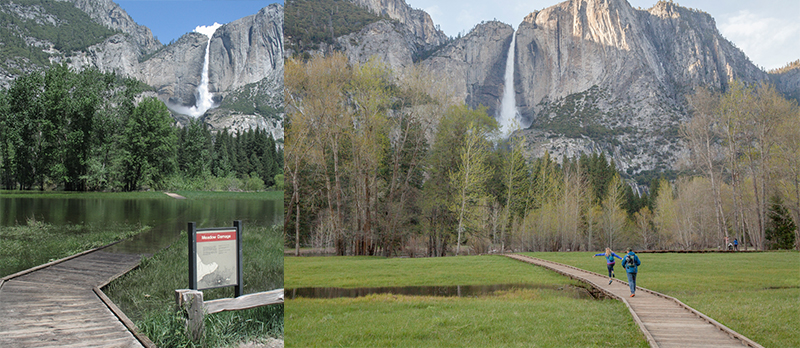
… at Tenaya Lake, where boardwalks were installed as part of major trail and habitat restoration work around one of the park’s most popular summer destinations. Before the boardwalks were in place, visitors encountered muddy, or flooded, trails leading to the lake’s East Beach, and a stretch of pavement on the western end. Today, you’ll find a series of beautifully fashioned boardwalks that provide easy access to the beaches and shoreline trail, while allowing water-loving plants to flourish.
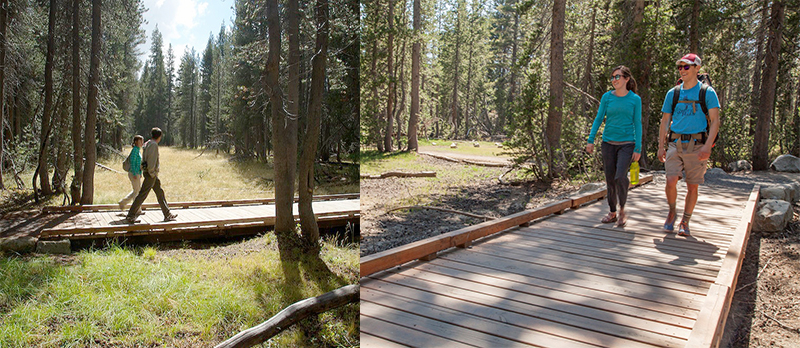
… in Mariposa Grove, where boardwalks are a key element of the new trail system put in place as part of a multiyear restoration project (wrapping up next month!). You might not think of a sequoia forest as a particularly watery place, but you’ll find streams and wetlands throughout the grove, creating optimal habitat for California coneflowers, bog orchids and other moisture-loving plants — and the giant trees themselves rely on a steady supply of water to grow (and grow, and grow).
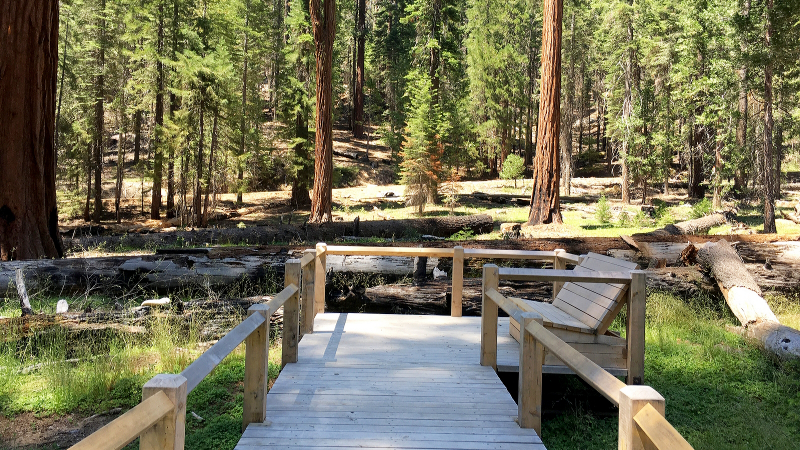
The next time you find yourself on one of Yosemite’s boardwalks, take a moment to tear your gaze from the surrounding granite cliffs or towering trees, and examine the handiwork of Yosemite’s talented trail crews. Look down at the carefully constructed planks, and see if you can identify the plants growing below, or spot signs of wildlife taking advantage of the healthy habitat.
Yosemite’s boardwalks are eye-pleasing structures … but even the most architecturally appealing ones only work if you use them. As with trails, be sure to stay on boardwalks whenever possible, especially because they’re often built in places where the surrounding terrain is particularly vulnerable to the impacts of treading feet.
Staying on boardwalks (and trails) is an important part of taking care of the park, but you can make a difference even when you’re far from the Sierra: Take a look at our current projects to see how you can help Yosemite this year!
Above: Visitors enjoy an evening stroll on a boardwalk in Yosemite Valley. Photo: Yosemite Conservancy/Keith Walklet

